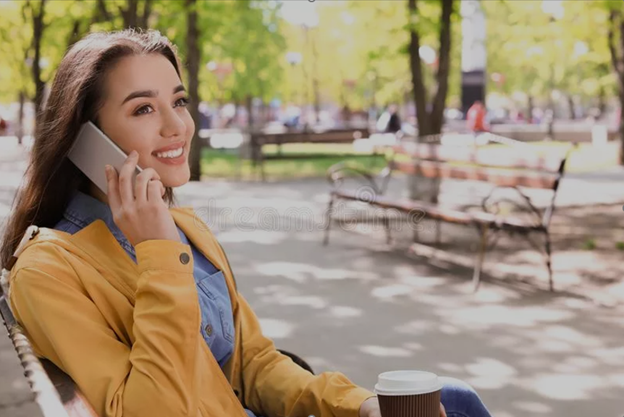Task 1
Imagine that you are preparing a project with your friend. You have found some interesting material for the presentation and you want to read this text to your friend. You have 1.5 minutes to read the text silently, then be ready to read it out aloud. You will not have more than 1.5 minutes to read it.
World Oceans Day is an international day that takes place annually on 8 June. It is a day to think about the extremely important role that the oceans play in all our lives, the dangers that are facing our oceans and the actions we can take to protect them.
Life began in the ocean. The ocean is home to the majority of plants and animals on Earth, from single-cell organisms to the blue whale. Marine plants provide us with 70 per cent of the oxygen we breathe. The ocean controls the climate, providing heat in winter and cool air in summer. It also provides us with food and medicines as well as transport.
The day is celebrated in a variety of ways, including special events at aquariums and zoos, beach and river clean-ups, school activities, conservation programmes, art contests and film festivals.
Task 2
Study the advertisement.
Spacious flat available for rent – move-in ready!

You are going to rent this flat and now you’d like to get more information. In 1.5 minutes you are to ask four direct questions to find out about the following:
- location of the flat
- utilities included
- rules about guests
- pet policy
You have 20 seconds to ask each question.
Suggested answers
1. Where is the flat located?
2. What utilities are included in the rent?
3. Are there any guest rules?
4. What is the pet policy for the flat?
Task 3
You are going to give an interview. You have to answer five questions. Give full answers to the questions (2–3 sentences). Remember that you have 40 seconds to answer each question.
Audio Task 3
Tapescript for Task 3
Suggested answers
Interviewer: Hello everybody! It’s Teenagers Round the World Channel. Our guest today is a teenager from Russia and we are going to discuss the Internet. We’d like to know our guest’s point of view on this issue. Please answer five questions. So, let’s get started.
Interviewer: Are you a regular Internet user? How often do use the Internet?
Student: Yes, I am a regular Internet user. I use it almost every day.
Interviewer: What are the risks of being online?
Student: I think there are some dangers to be aware of when using the internet, like bullying or viruses. There’s also a risk that your personal information can be stolen or used improperly on the internet.
Interviewer: What do you use the Internet for?
Student: Personally, I use the internet for many things such as studying, chatting with friends and enjoying entertainment like games and videos. I also use it for shopping.
Interviewer: How has the Internet transformed our lives?
Student: I think the Internet has transformed our lives in many ways. We can now find information much faster, and it has also changed how we learn and how we communicate with others.
Interviewer: What would life be like without the Internet?
Student: If we didn’t have the internet, life would be quite different. It would be much harder to talk to others and get information fast. It would also limit many of the opportunities that the internet offers, like online shopping and learning from far away.
Interviewer: Thank you very much for your interview.
Task 4
Imagine that you and your friend are doing a school project “Communication options”. You have found some photos to illustrate it but for technical reasons you cannot send them now. Leave a voice message to your friend explaining your choice of the photos and sharing some ideas about the project. In 2.5 minutes be ready to:
- explain the choice of the illustrations for the project by briefly describing them and noting the differences;
- mention the advantages (1–2) of the two types of communication;
- mention the disadvantages (1–2) of the two types of communication;
- express your opinion on the subject of the project – which type of communication presented in the pictures you prefer and why.
You will speak for not more than 3 minutes (2–3 sentences for every item of the plan, 12–15 sentences total). You have to talk continuously.
Suggested answers
Hi Alex! I’ve found a couple of photos for our project on communication options. I’ll tell you more about them in this voice message.
One of them shows a young girl sitting on a bench and talking on her mobile phone. The place looks like a park. The other one depicts two girls enjoying each other’s company and having a nice chat over tea in a café. The photos effectively capture the idea of two different forms of communication: using a mobile phone to keep in touch, and talking to people face-to-face.
There are advantages and disadvantages to both types of communication, which I suggest discussing in our project. Mobile phones are convenient because we can reach people quickly and easily anywhere and anytime. But this type of communication is unreliable at times because the signal quality can be poor, which means we might miss out on some important stuff.
On the other hand, talking to someone in person is valuable because we can express our feelings more clearly and understand their emotions through their body language and facial expressions. And yet, arranging face-to-face conversations can be difficult, especially when the people we want to talk to are far away.
Personally, I prefer talking to people face-to-face because it provides a more personal touch. For me, it’s more natural to engage in a conversation when I’m physically present with someone.
(Personally, I prefer talking with people using my mobile phone because I can make a call from anywhere, without having to be in a specific place. I find this option especially helpful when I’m on the go.)
Well, that’s all for now. Bye!

